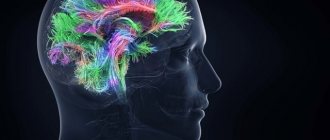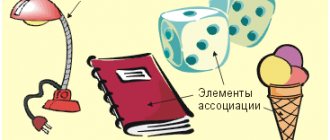Anonymously
Around the clock
Attention! The material contains information about substances, the use of which can cause serious harm to your health!
Drug addiction is the scourge of our time, connecting people and their families and taking away from them even hope for a normal life. You can only get rid of your addiction to drugs with professional drug treatment. The sooner treatment begins, the greater the chance for the addict to return to a healthy life. However, identifying a problem in a family is not so easy. Therefore, everyone should learn in advance about the main types of drug addiction, its characteristics and manifestations, in order to be ready to act if this misfortune comes knocking on your home.
- Addiction
- What is drug addiction? Definition
- The concept of “drug addiction”
- Drug syndrome
- Etiology of drug addiction
- Causes of drug addiction
- Social addiction
- Psychological addiction to drugs
- Physical dependence on drugs
- Risk factors
- Faces of drug addicts
- Types of drug addiction
- Salt addiction
- Heroin addiction
- Drug addiction
- Social addiction
- Iatrogenic drug addiction
- Information addiction
- Stages of drug addiction
- First stage
- Second stage
- Third stage
- Chronic drug addiction
- Severe drug addiction
- Symptoms of drug addiction
- Changes in behavior: the consciousness of a drug addict
- Impact on the internal organs of drug addicts
- External signs of drug addiction
- Mental problems: personality degradation
- Consequences of drug use
- Diagnosis of drug addiction
- Drug addiction treatment
- Drug addiction treatment at home
- Treatment of drug addiction in the clinic
- Drug addiction rehabilitation
- Prevention of drug use
We will select an individual treatment plan
Free consultation 8-800-200-27-23
Drug addiction
Drug addiction is characterized by a pathological physiological and psychological craving for psychoactive substances. Doctors believe that the main reason for the development of drug addiction is a congenital disorder in the synthesis of happiness hormones (neuropeptides). These substances are responsible for mood, motivation, and a sense of satisfaction. With their deficiency, a person feels constantly lonely and unhappy.
Most drugs activate the synthesis of happiness hormones. I want to experience the strong sensations and emotions after taking a dose again. This leads to the formation of addiction.
What contributes to the development of addiction
To become addicted to a substance, it must be available in the community. In addition, there is a mixture of psychological and neurobiological conditions that may contribute to susceptibility to drug addiction.
Many substances (such as alcohol) make a person feel alert, well-being, relaxed and satisfied. It becomes an escape from the problems and difficulties of everyday life.
A number of medications relieve unpleasant symptoms, such as:
- pain - morphine-like substances;
- anxiety - benzodiazepines;
- sadness, depression and insomnia - antidepressants and sleeping pills.
These are the reasons why a person continues to take drugs, although he is well aware of their harm.
Drug addiction statistics in Russia
According to official statistics for 2022, 460 thousand people are registered in drug dispensaries. But the real number of drug addicts in the Russian Federation is estimated at 6 million. 20% are schoolchildren aged 9–13 years, 20% are over 30 years old, 60% are young people 16–30 years old. More than 18 million people throughout Russia periodically use and are familiar with drugs. The average age of most drug addicts is 20 – 39 years. Every day the number of drug addicts increases by 250 people. The death rate from drugs in Russia is 80 people per day.
What substances are addictive
People become addicted not only to illegal substances, but also to the drugs they receive from their doctor. It is also possible to become dependent on medications that are not considered drugs or on alcohol.
The most common illegal drugs that are abused are;
- cannabis;
- hallucinogens (PCP, LSD);
- amphetamine;
- ecstasy;
- cocaine;
- crack;
- heroin
and this is not a complete list.
Among the drugs is a group of sedatives and painkillers. For example, benzodiazepines or morphines.
Signs of drug addiction
With any drug addiction, changes occur in a person’s health, behavior and appearance. Interests, social circles, and character change.
Symptoms
Even after one-time use of drugs, health problems arise. Symptoms of drug addiction depend on the type of psychoactive substance, but there are common characteristic signs:
- a sharp decrease in body weight;
- lack or increase of appetite, severe thirst;
- chronic insomnia, disruption of daily routine, daytime sleepiness;
- changes in blood pressure;
- attacks of nausea, vomiting, diarrhea, constipation;
- runny nose, cough;
- increase or decrease in temperature;
- unpleasant odor from the mouth, body and clothing;
- weakness, headache, muscle, joint pain;
- labored breathing;
- unstable psycho-emotional state - joy is replaced by aggression, cheerfulness by complete apathy.
When the liver is damaged, pain occurs in the right hypochondrium, stool becomes lighter, urine becomes darker, the sclera is jaundiced, and a vascular pattern appears on the face or body.
External signs of a drug addict
External manifestations of drug addiction do not appear immediately, but are pronounced, especially in women.
Changes in appearance:
- unhealthy complexion, pale skin, with a grayish, bluish, jaundiced tint;
- the skin peels or becomes oily;
- pustules, ulcers appear on the lips, face, rashes on the body, deep wrinkles;
- hair falls out, teeth decay;
- the eyes are red, watery, and an unhealthy shine appears;
- increased sweating;
- pupils are constricted or dilated, do not respond to light;
- facial expressions are too lively or the face takes on an unchanged expression;
- the tongue is covered with a gray, white coating and longitudinal cracks;
- In the places where the veins pass, traces of injections and bruises are visible.
The drug addict stops taking care of himself, wears dirty clothes of dark colors, and does not observe the rules of personal hygiene.
Changes in behavior
Uncharacteristic behavior, changes in circles and manners of communication are the first signs of drug addiction in adolescents and adults.
Behavioral changes in drug addicts:
- the sphere of interests changes;
- drug addicts are secretive, suspicious, and filigree lies;
- absent-mindedness, problems with orientation in time and space;
- irritability, nervousness;
- the appearance of specific slang words during conversation;
- decline in academic performance in adolescents.
Unusual objects also appear. These can be syringes and ampoules, smoking pipes, dense lumps similar to plasticine with a pungent odor, tourniquets, smoked spoons.
Cognitive changes
Drugs negatively affect brain function and cognitive dysfunction develops:
- memory problems;
- decrease in intellectual and mental abilities;
- all emotions disappear - empathy, love;
- rigidity towards those close to you due to brain degradation.
All this gradually leads to complete personality degradation and dementia.
If you notice changes in a loved one and are concerned about their well-being, talk to an addiction counselor.
Don't know where to start?
Start by talking to an addiction counselor for free.
7
- or -
Perception disorders during drug intoxication
Perception disorders during drug intoxication manifest themselves in three forms. Impaired consciousness during intoxication is defined as: increased perception (with the use of stimulants), selectivity (with opium addiction), decreased perception (with the abuse of sleeping pills and tranquilizers). These disorders correlate with a state of active attention.
It is important to note that during intoxication, the connection between attention and fixation of impressions is disrupted . Even with the use of certain stimulants, when logically there should be good memorization, amnesia is often observed for events that occurred during the period of drug intoxication. Later, a person can say that he heard and saw everything very clearly, but he definitely cannot tell any of this. In this way dissociation of mental functions ; this state is always accompanied by words like: “as if this was not happening to me.” In addition to these quantitative disorders, malignant disorders necessarily occur, such as impaired psychosensory perception, productivity, and even hallucinations.
Changes in the perception of what is happening and the external environment occur : the shape of objects, color saturation, distances from objects, it may seem that the immovable is moving (approaching or moving away). Metaphorpsia (distorted perception of the shape, color and size of objects) is less Violation of sensory synthesis manifests itself in a feeling of derealization (a disturbance of perception in which the surrounding world is perceived as unreal).
Interoreception is also disrupted , which ensures the body’s adaptive reactions to changes in the conditions of the internal environment: from elementary sensations of temperature, the weight of one’s body in space, in one’s own body, the feeling of the absence of certain limbs or the presence of “extra” ones. At the third stage of drug addiction, autotopagnosia also occurs (ignoring half of the body, but mainly failure to recognize its individual parts). At the same time, the description of what is happening by the drug addict himself takes on a fantastic coloring: the drug addict sees his brain and the processes that occur in it. When the corresponding analyzer is irritated, the likelihood of spontaneous or reflex hallucinations is very high. Also characteristic is the presence of visual hallucinations called pareidolia, visual illusions that are formed on the basis of real-life objects. The skin also feels imaginary blows or touches. Such an “abundance” of these experiences is so complete and “inspired” for the drug addict that at these moments he is afraid to even change his position, so as not to “spoil” or “scare off” them. With all this, others observe a certain pseudo-stupor from the side.
The difference between other disorders in drug addicts and perceptual disorders lies in the presence of prevailing symptoms: visual, auditory, tactile (sensation of touch and movement on the skin), propriosensitive (devices (receptors) of muscles, tendons and joints) analyzers. At the same time, taste and auditory analyzers rarely appear.
The “suggestivity” (directed mental impact) of these experiences is also characteristic: the addict can “order” himself what to see or hear. This suggestiveness is often associated with a state of consciousness; with several types of drug addiction, it acquires a collective character or under the influence of external stimuli. As the intoxication deepens, the ability to control one's thoughts and feelings decreases.
Up
Stages of drug addiction
Drug addiction develops gradually. For a long time a person does not recognize the existence of a problem. Awareness comes when the disease is in an advanced form; it is impossible to stop taking drugs on your own.
First stage. After taking a dose, a feeling of euphoria, cheerfulness or pleasant relaxation arises, all sensations become more intense, and complexes disappear. After the drug wears off, minor anxiety occurs, but there are no severe disorders or withdrawal symptoms. At this stage, you can cope with addiction on your own.
Second stage. The euphoria dulls, large doses are needed to feel the usual high. Withdrawal syndrome manifests itself more strongly, social connections are disrupted.
Third stage. There is practically no pleasure from taking drugs. The whole life of a drug addict comes down to finding money for a new dose. Withdrawal is severe, accompanied by panic attacks and depression.
Why does a person start using drugs?
An attempt to normalize the emotional state. Addiction is based on a psychological problem. Often a person is not aware of it. Chemical doping quickly solves the problem of internal dissatisfaction and chronic discomfort.
Curiosity. Teenagers try illegal substances to experience an unusual state. 10% of people in Russia have taken drugs at least once, and in St. Petersburg this figure reaches 30%. Not every person becomes addicted after a single dose. But many types of drugs cause intense cravings after the first dose.
The influence of the environment. If friends or relatives are addicts, the likelihood of using is very high. Man is a social being. He adapts to the environment and adopts the behavior patterns of others. Therefore, to prevent drug addiction, as well as during treatment, it is necessary to isolate the patient from other addicts.
Complications and consequences of drug use
Drugs negatively affect the functioning of all internal organs. Against the background of drug addiction, dangerous pathological processes develop, which are often irreversible.
- cardiac, renal, liver failure;
- cardiomyopathy;
- phlebitis, thrombophlebitis, thromboembolism;
- swelling of the brain, lungs;
- hepatitis, cirrhosis;
- oncological pathologies;
- infertility, impotence, menstrual irregularities;
- diseases of the musculoskeletal system;
- chronic bronchitis, pneumonia;
- myocardial infarction, stroke, hypertensive crisis;
- anorexia, vitamin deficiency, anemia;
- dental problems;
- acute psychosis, which transforms into schizophrenia, bipolar affective disorder, paranoia;
- HIV, AIDS, sepsis.
If you are facing a drug addiction problem in your life and need support, you can get it in our chat rooms. You can also find psychologists and addiction counselors there.
Danger signals (memo for parents)
Unexplained absences.
The child withdraws from his parents, often disappears from home for a long time, or locks himself in his room. Questions, even the most delicate ones, cause him to burst into anger.
Friendship, communication.
The child’s social circle changes, old friends disappear, new ones appear, whom he does not invite home or introduce to his parents. The child often has strange conversations on the phone, does not speak openly in the presence of strangers, uses hints, jargon, and conventional “codes.”
Mode changes.
Late going to bed, waking up later, closer to lunch; fluctuations in appetite - either suppression or increase, with a preference for sweets, chocolate; the emergence of the habit of washing in the bathroom for a long time, sitting on the toilet;
Change in appearance.
A new, previously unusual way of dressing appears: wearing clothes with long sleeves even in hot weather, the desire to insulate yourself excessively;
The character of the child.
The child's character changes dramatically. He ceases to be interested in what used to matter: family, study, hobbies. Irritability, hot temper, capriciousness, selfishness, deceit, and secrecy appear. There is a sharp change in mood: now he is full of energy, cheerful, joking, now he becomes passive, lethargic, gloomy, whiny.
Theft. Concealment.
The child has financial problems. He often asks his parents for money, but cannot explain why he needs it. Money and things are gradually disappearing from the house. At first this may not be noticeable; disappearances in the family are explained by chance (lost, forgot where they put it). Then the disappearance (of video equipment, for example) is difficult to hide.
Child's personal room.
The bedroom is constantly cold, the room is often ventilated. There are signs of using incense, air fresheners, breath fresheners, perfume and cologne. The child tries not to let anyone into his room.
Unusual condition of the child.
Often a child may appear to be intoxicated, but without the smell of alcohol. Coordination of movements and speech may be impaired, ridiculous laughter may appear, and pupils may be constricted or dilated. The smell of glue comes from the clothes.
The assumption that a child is using drugs causes strong negative emotions in parents, followed by hasty actions. This may make the situation worse.
Some types of drug addiction
In modern narcology, drug addiction includes not only the use of prohibited substances. But also the Internet, drug addiction, iatrogenic addiction and others. Here are some of the common ones.
Severe drug addiction
In narcology there is no division of narcotic substances into heavy and light. All drugs negatively affect human health and life. But there are drugs that become addictive after 1-2 doses. At the same time, against the background of addiction, irreversible destruction of internal organs, psyche and nervous system occurs.
The hardest drugs
- heroin - addiction forms after the first use;
- methadone - dependence on the drug is stronger than on heroin;
- Desomorphine (“crocodile”) is the most dangerous opioid; within 2 years the addict completely rots from the inside;
- amphetamine is a popular psychostimulant among young people; use leads to exhaustion and mental disorders;
- ephedron - a cheap analogue of a hair dryer, quickly provokes the development of mental degradation and dementia;
- cocaine - addiction occurs quickly and is practically untreatable;
- ecstasy - a synthetic stimulant causes severe intoxication, which leads to complete destruction of the entire body;
- LSD is a powerful hallucinogen; during euphoria or withdrawal, the addict often commits suicide.
- salts (MDPV, Alpha PVP, Mephedrone) – synthetic cathinones. Consumption leads to mental disorders.
All hard drugs disrupt metabolic processes, the body adapts to the action of surfactants. A severe psychological and physical addiction is formed, which is difficult to get rid of.
Heroin addiction
Heroin is a semi-synthetic opioid drug that is highly addictive even after a single dose. The substance activates opioid receptors in the brain, causing a feeling of euphoria.
Consequences of taking heroin:
- breathing and heart rhythm disturbances;
- involuntary urination and bowel movements;
- vomit;
- severe skin itching;
- lethargy.
Heroin addicts are often diagnosed with HIV, hepatitis, and sepsis. With prolonged use of the drug, the heart, liver, and kidneys fail, psychosis and severe depression develop.
Withdrawal is accompanied by severe pain. Without timely drug treatment, withdrawal can be fatal.
- Learn more about heroin addiction
Chronic drug addiction
Chronic drug addiction is characterized by frequent breakdowns and a lack of desire for treatment in the addict. The danger of such addiction is that after therapy the person takes the usual dose of the drug. At the same time, he forgets that the body’s tolerance has decreased. The result is an overdose and death.
Iatrogenic drug addiction
This type of drug addiction develops when taking medications prescribed by a doctor. Many pharmaceutical drugs are addictive, but experts do not always warn about this side effect. As a result, the person continues to take the medicine, increases the dose, and addiction develops.
Information addiction
The need to constantly follow the news, not to part with gadgets even on vacation, can also be attributed to addiction. Information addiction includes any excessive involvement with the computer - games, chats, surfing, scrolling through social networks. To avoid the development of addiction, it is necessary to reboot at least once a week without TV and gadgets. Also work with a psychologist.
Drug addiction
Strong sleeping pills, sedatives, and painkillers from pharmaceutical drugs, if used incorrectly, can cause addiction. Often such drugs are inexpensive and easy to purchase, which leads to an increase in the number of drug addicts.
Teen drug addiction
Drug addiction among adolescents develops according to a different pattern compared to drug addiction among adults. Childhood drug addiction is accompanied by sad consequences. Teenagers use synthetic cheap drugs, which leads to irreversible mental consequences: borderline personality disorder, suicide, schizophrenia, etc. The risk group includes children not only from disadvantaged families, but also with a genetic disorder of neurotransmitter connections.
Psychological reasons - inability to cope with stress, say “no”, resist the desires of other people, lack of willpower.
Social addiction
Drug addiction is a bisocial disease that destroys not only the life of the patient, but also those around him. Gradually, a normal person turns into a sociopath, all interests are reduced solely to finding a new dose. Due to changes in life preferences, psycho-emotional and physical state, psychopathization develops and criminal tendencies appear.
Thinking disorders in drug addicts
Changes in the thinking of a drug addict occur in different ways and depend on the type and amount of a single dose of the drug that is used. The most characteristic and obvious feature of these changes is catastrophic thinking (the influence of emotional factors and ambivalent (that is, contradictory) tendencies (feelings, desires, fears) on a person’s mental activity. In a simplified sense, this means thinking through the prism of emotions). There seems to be a shift in emotional and intellectual proportions in the plane of mental activity. The emotional mood determines a set of sensations and reasoning, their intellectual processing and conclusions. In addition, the drug addict’s ability to actively manage attention suddenly disappears . Defective perception is intertwined with impaired thinking. Lighthouse ideas arise , which, due to the short duration of the state, do not have time to acquire a completed form.
Disorders of awareness cannot be explained only by emotional barriers, but also by disturbances in concentration, an objective decrease in the quality of thinking, since it is always possible to establish the level of disorder of consciousness, which is considered as a drop in the activity of higher levels of the psyche.
When intoxicated by hallucinogens, thinking is directed to a plane that lies outside the boundaries of reality. These fantastic thoughts may have an underlying thought disorder. And this fantasy is explained by the fact that disorders of active attention contribute to the free uncontrolled flow of imagination and their interweaving. The natural, normal train of thought is disrupted , which is confirmed by the pace of language broadcasting . Sometimes the rate of speaking may decrease , and perseverations appear (obsessive repetition of the same movements, images, thoughts).
Up
Drug addiction and society
The main social consequences of drug addiction are the commission of various crimes by patients. Almost all drug addicts sooner or later have financial problems. Stimulants are expensive, and as addiction develops, you need to constantly increase the dose and take it often.
Due to the destruction of personality, dysfunction of the nervous system and internal organs, dependent people can perform work solely under the influence of drugs. And then only at the very beginning of the development of the disease. Then there are fewer and fewer sober moments in life, and the energy potential decreases. The patient completely transfers to the support of relatives.
Drug addicts often commit serious and moderately serious crimes - robbery, burglary, murder, theft, extortion. They begin to take valuables out of the house; spouses and parents often suffer from aggression and beatings. Crimes of a sexual nature, pedophilia and homosexual contacts are committed under the influence of psychotropics.
Almost all drug addicts are involved in the sale, production, transportation, and transfer of drugs. Because of this, they come to the attention of law enforcement agencies.
According to statistics, addicts get into accidents 5 times more often than sober citizens. The culprits are often people under the influence of drugs and suffering from withdrawal symptoms. Or they simply have psychological disorders due to long-term use of psychoactive substances.
Who is prone to addiction?
Anyone, regardless of age and gender, can succumb to temptation. Some are much more vulnerable to abuse than others. Often these are people who have a lot of unresolved problems or individuals with low self-esteem. They may have difficulty communicating or feel that the demands placed on them by the environment are greater than they can meet.
In this context, it seems that individual personality characteristics, past life experiences and upbringing conditions may play a decisive role. However, no clear conclusions can be drawn on this basis. Drug abuse and addiction can develop in people who previously seemed stable and well-adjusted, or even in children from seemingly affluent families.
In recent years, it has been discovered that neurobiological changes also occur in the human brain, which subsequently become dominant. This leads to the fact that an addicted person cannot fully feel comfortable and experience positive emotions without using a portion of drugs. If he does not take a drug to which he has developed an addiction, then the world around him seems gray and hostile, and life loses its meaning.
Drug addiction is a brutal war that takes away the gene pool of nations
Families of drug addicts often give birth to sick children who are of no use to anyone. They end up in orphanages and shelters and are raised on the streets. As a result, they turn into people dangerous to society.
The average age of drug addicts is 25–35 years. These people could work, start families, have children. But instead, the state is deprived of working and healthy members of society, which negatively affects the economy and demographic indicators.
Teenagers are increasingly starting to use psychoactive substances. Against the background of chronic intoxication, mental development stops and cognitive functions are impaired. Such patients are unable to study, acquire a profession, or build a career. On a national scale, this threatens the social inferiority of an entire generation.
Motives for infecting other people:
Selfless. A drug addict wants to share joy and new sensations with others.
Selfish. Joint participation in obtaining drugs or money to buy drugs. Involving people with good incomes and people from wealthy families.
Often young people take drugs before committing a crime in order to drown out caution and the instinct of self-preservation.
Persons with a penchant for sexual acts use themselves and give their victims drugs with a pronounced euphoric effect.
Not only regular intake of substances, but one-time use of psychotropics has a negative impact on mental and physical well-being. Many substances cause addiction after 1-2 doses.
The suicide rate among drug addicts is the highest - 178 people per 1 thousand population. Which is 30 times higher than other categories. Some addicts commit suicide during euphoria under the influence of hallucinations and visions. But most patients make a conscious decision to die. They give a “golden injection” - an injection with a high dose. The reason is that there is a desire, but there is no strength to cope with the disease.
Another personal and social consequence of drug addiction is codependency.
- Read more about the social danger of drug addiction
The appearance of strange objects
Items that may serve as a sign of drug addiction in a family member deserve special attention. If you find strange objects at home that are unclear where they came from, this is a very serious reason to take a closer look at the situation and other symptoms. There is a high probability that your loved one has become addicted to drugs. Here's a list of similar items:
- Syringes, medicine bottles.
- Capsules and tablets, and they can be without packaging at all.
- Smoking pipes, plastic bottles with foil instead of a cork.
- Bundles, bags with powder, small crystals, dried crushed plants, a mass similar to plasticine with a specific smell.
- Cigarettes with a "sleeve".
- Precious metals scales.
- Tourniquets for tightening veins.
- Fire-burnt spoons.
- Moment glue and acetone.
How to avoid drug addiction - addiction prevention
Drug addiction prevention is a set of methods aimed at preventing the onset of substance use and limiting the development of problems associated with drug use.
Types of prevention:
Primary. Aimed at all segments of the population. Objective: to prevent drug use, to convey that there are no soft and safe drugs, to talk about the consequences of drug addiction.
Secondary. Identification of people who are at risk. One of the methods is drug testing of schoolchildren and students.
Tertiary. Necessary to prevent the development of complications and relapses of drug addiction. Conducted in drug treatment clinics.
Drug addiction prevention is carried out by parents, teachers, law enforcement, medical, and social services.
Changes in the addict's behavior
The addict's behavior undergoes significant changes. He can completely change his social circle. Former interests lose their significance and are completely forgotten. New words appear in speech, and an atypical manner of behavior is observed. These signs of drug use can be seen in both teenagers and adults.
- Changing interests and hobbies, most often a person ceases to be interested in anything at all. Study, work, sports - everything is gradually abandoned.
- Old friends and acquaintances disappear, they are replaced by new people, often of unknown occupation and with a suspicious appearance.
- The addict becomes deceitful, cunning and secretive. He almost always doesn’t say something and doesn’t answer many questions. It becomes unclear to you what he is doing and where he spends his time.
- The style and manner of communication are changing. Drug addicts often speak reluctantly, briefly, and are emotionally unbalanced. Slang words and swear words may appear in the conversation.
- Problems with study and work begin, associated with repeated absences and absenteeism.
- Sudden and frequent mood changes are observed. A drug addict can show causeless aggression even towards close people, which he would never have allowed himself to do before.
- A person’s personal qualities change, he loses moral values. Forced to constantly look for money for drugs, he gets it through lies and begins to steal.
Fight against drug addiction
The fight against drug addiction includes prevention, treatment and punitive measures. The media is involved in prevention to reach different target audiences.
Drug addiction treatment is carried out in private and public drug treatment clinics. Government institutions eliminate the manifestations and consequences of withdrawal symptoms and register patients. In private centers, complex and systemic therapy is carried out, the treatment is anonymous.
Administrative punishment is provided for distribution, use, production and storage, and involvement of minors. The anti-drug law does not apply to people who voluntarily went to a drug dispensary and submitted a confession.
Treatment prices:
| Sign up for a free and anonymous consultation with a narcologist | 0 ₽ |
| Initial consultation with a narcologist | for free |
| Consultation with a psychologist in person or Skype | 3 000 ₽ |
| Psychiatrist consultation | 5 000 ₽ |
| Psychodiagnostics / pathological diagnostics | 7 500 ₽ |
| Narcopsychotherapy | 50 000 ₽ |
| Consultation with a psychologist and selection of a treatment and rehabilitation program for an addict | for free |
| Intervention session | 12 000 ₽ |
| Social rehabilitation of alcohol addicts | for free |
| Outpatient rehabilitation in Moscow | 33 000 ₽ |
| Standard rehabilitation program | 40 000 ₽ |
| Intensive rehabilitation program | 80 000 ₽ |
| Premium rehabilitation program | 120 000 ₽ |
| Medical and social rehabilitation (21 days) | 150 000 ₽ |
| Rehabilitation Spain, Bulgaria | 200 000 ₽ |
| VIP rehabilitation program | 350 000 ₽ |
| Online addiction rehabilitation course | 28 000 ₽ |
| Rehabilitation of age-related alcohol addicts | 50 000 ₽ |
| Rehabilitation of drug addicts | 60 000 ₽ |
| Adolescent social-psychological-pedagogical rehabilitation | 70 000 ₽ |
| Psychotherapy | 5 000 ₽ |
| Family psychotherapy | 6 000 ₽ |
| Support groups for loved ones of addicts | for free |
| Webinars for relatives of addicts | for free |
| School for codependents | 3 000 ₽ |
| Transfer support | negotiable |
| Motivation for treatment | 6 000 ₽ |
| Escort to the clinic | 6 000 ₽ |
| Testing (urine/blood/hair) | specify |
Expand
Still have questions? Call us!
8
Free consultation and appointment
Types and methods of drug addiction treatment
In the treatment of drug addiction, an integrated approach is used to eliminate physical and psychological dependence and the consequences of drug use.
Detoxification. Droppers and hardware methods are used to cleanse the body of toxic substances and their breakdown products. At this stage, withdrawal symptoms are removed.
Drug therapy. The goal is to alleviate withdrawal symptoms and eliminate physical dependence. At this stage, motivators work with the patient. Specialists help the patient make a voluntary decision to undergo a full course of therapy and rehabilitation.
Coding. They use drugs and psychotherapeutic methods to develop an aversion to drugs.
Rehabilitation therapy. Drugs are prescribed to eliminate dysfunction of damaged organs. These are hepatoprotectors, cardioprotectors, nootropics, diuretics, antihypertensives and vitamin complexes. To normalize sleep and psycho-emotional state, antidepressants, sleeping pills and sedatives are prescribed.
- Learn more about drug treatment for drug addiction
Rehabilitation. Individual and group psychotherapy, trainings, special rehabilitation programs - all these methods help pull the patient out of the drug environment and teach him to live without drugs.
- Find out more about addiction rehabilitation
Resocialization. The patient learns to live in society, returns to work or school, and finds new hobbies.
- Find out more about the resocialization period
Drug addiction treatment is best carried out in special drug treatment clinics with complete isolation from the outside world. For mild forms of drug addiction, outpatient or home therapy is allowed during the recovery stage. Drug addiction treatment is one of the most important decisions in your life. Don't delay and seek help.
Behavioral signs of drug addiction in adolescents
Of course, based on the supposedly unidentified behavioral and mental signs of drug addiction, it is easier to recognize a person dependent on psychotropic substances for those who live next to him. It is necessary to “ring the alarm bell” if the following manifestations are observed:
- Excessive secrecy with a good relationship with parents (the desire not to be at home during the time that the teenager previously preferred to spend with his family or doing homework).
- Lack of sleep patterns - falling asleep late at night or constantly lying in bed (if this has not happened before).
- Lack of interest in studying and favorite activities and hobbies, reasonless absence from going to school.
- Poor performance at school - the teenager previously studied well, but “slipped” into Cs and Ds.
- Strange behavior that is similar to intoxication from alcohol, but there is no smell of alcohol in the mouth.
- Increased need for cash, loss of money from parents’ wallets or piggy banks, or from bank cards.
- The appearance of suspicious people in the child’s circle of friends, secret conversations with them, in a subdued tone.
- Constantly changing mood, or inappropriate to the current situation.
- Traces of injections on the hands.
- Rough answers to parents, relatives and friends.
Literature:
- Medical, social and economic consequences of drug addiction and alcoholism: [monograph] / E. A. Koshkina [et al.]; Ministry of Health and Social Development of the Russian Federation, Nat. scientific Center for Narcology [and others]. - Moscow: Per Se, 2008. - 287 p.
- Drug addiction: causes, consequences, protective measures / [V.G. Baykova, S.B. Belogurov, A.N. Garansky and others]; Under general ed. A.N. Garansky. - Tyumen: Mandrika Publishing House, 2000. - 381 p.
- The worst enemy: (On the consequences of substance abuse and drug addiction) / A. N. Kudrin, N. P. Skakun. - M.: Knowledge, 1990. - 62 p.
Infectious diseases of drug addicts
When psychostimulant drugs are abused, the immune system is sharply reduced, so addicts are often susceptible to various infections.
Hepatitis. Addicts suffer from all types of viral hepatitis (B, C, D). Most are diagnosed with mixed forms. Infection occurs through the use of unsterile syringes or through sexual intercourse.
Viral hepatitis C is asymptomatic. Its course can be chronic or acute, and in the form of virus carriage. They usually become infected in the first year of use. And ultimately it all ends in liver cirrhosis.
HIV is transmitted sexually and through blood and completely destroys the immune system. Even a simple acute respiratory infection can occur in a non-standard form. Atypical pneumonias often develop, which are difficult to treat. In drug addicts, the transition to AIDS occurs faster than in people who do not use.
Tuberculosis - affects the lungs and skeletal system. When combined with HIV, recovery is impossible.
Sepsis. Lack of hygiene and the use of dirty syringes contribute to the infection entering the bloodstream, which spreads it throughout the body. Systemic damage and multiple organ failure occurs, leading the drug addict to death.










